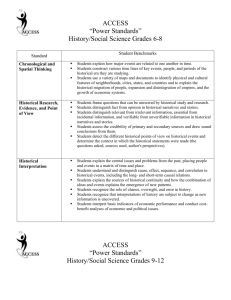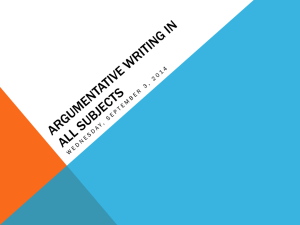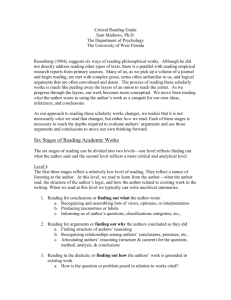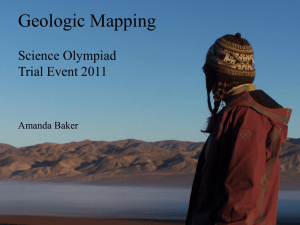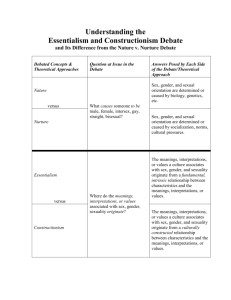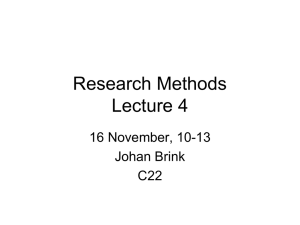Paper 3: Comparisons of Two Interpretations of a Creative Work
advertisement
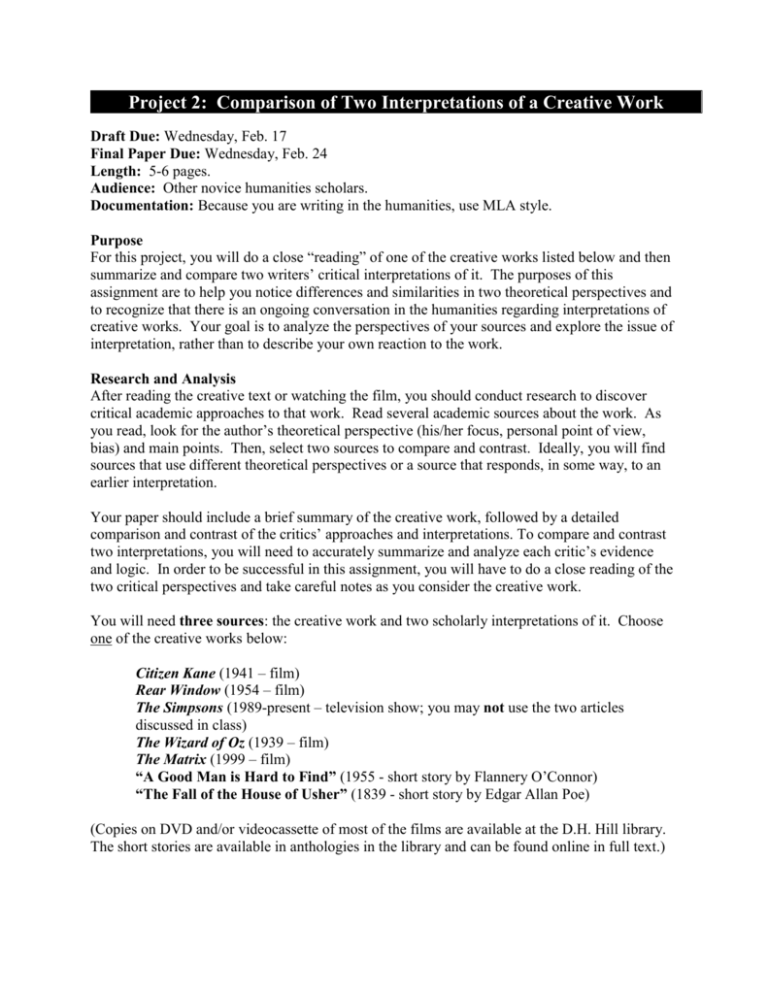
Project 2: Comparison of Two Interpretations of a Creative Work Draft Due: Wednesday, Feb. 17 Final Paper Due: Wednesday, Feb. 24 Length: 5-6 pages. Audience: Other novice humanities scholars. Documentation: Because you are writing in the humanities, use MLA style. Purpose For this project, you will do a close “reading” of one of the creative works listed below and then summarize and compare two writers’ critical interpretations of it. The purposes of this assignment are to help you notice differences and similarities in two theoretical perspectives and to recognize that there is an ongoing conversation in the humanities regarding interpretations of creative works. Your goal is to analyze the perspectives of your sources and explore the issue of interpretation, rather than to describe your own reaction to the work. Research and Analysis After reading the creative text or watching the film, you should conduct research to discover critical academic approaches to that work. Read several academic sources about the work. As you read, look for the author’s theoretical perspective (his/her focus, personal point of view, bias) and main points. Then, select two sources to compare and contrast. Ideally, you will find sources that use different theoretical perspectives or a source that responds, in some way, to an earlier interpretation. Your paper should include a brief summary of the creative work, followed by a detailed comparison and contrast of the critics’ approaches and interpretations. To compare and contrast two interpretations, you will need to accurately summarize and analyze each critic’s evidence and logic. In order to be successful in this assignment, you will have to do a close reading of the two critical perspectives and take careful notes as you consider the creative work. You will need three sources: the creative work and two scholarly interpretations of it. Choose one of the creative works below: Citizen Kane (1941 – film) Rear Window (1954 – film) The Simpsons (1989-present – television show; you may not use the two articles discussed in class) The Wizard of Oz (1939 – film) The Matrix (1999 – film) “A Good Man is Hard to Find” (1955 - short story by Flannery O’Connor) “The Fall of the House of Usher” (1839 - short story by Edgar Allan Poe) (Copies on DVD and/or videocassette of most of the films are available at the D.H. Hill library. The short stories are available in anthologies in the library and can be found online in full text.) Process/Organization In your paper, you should explain the terms, assumptions, and premises that each critic relies on for his/her argument. In addition, you should think about the interpretive strategies each critic uses. How does each source approach the issue? What conclusions does each critic reach? How do the critics reach those conclusions? How do the critics’ personal background and biases inform their conclusions? How is this perspective reflected in the kinds of textual evidence each critic uses and discusses? Once you have thought about each interpretation separately, you need to determine the similarities and differences between them. Introduction In your introduction, introduce the creative work and the scholarly interpretations, but do as little summarizing as possible. Make sure you state the author and title of each of your sources. Your thesis statement should include a brief overview of how the two sources relate to each other and what they say about the creative text. Body A natural organizational pattern would be to summarize the creative work itself, and then compare and contrast the two arguments point-by-point, but other arrangements may be discussed in class. What issue does each author focus on, and what conclusions does he or she reach? How does he or she reach those conclusions? That is, how do the authors’ theoretical perspectives inform their conclusions? Include textual evidence to back up your claims about the authors’ arguments. Point out where and how the interpretations are similar or different, and explain how the authors state their claims. Do the critics share any assumptions about the work? Where do they agree? Where do they disagree, or how do their interests and focus differ? Conclusion In your conclusion, reflect on how the authors’ scholarly perspectives influence their interpretation of the creative work. This would also be a logical place to comment on how these perspectives may have influenced your own interpretation of the creative text. Evaluative Criteria I will evaluate your paper based on how well it summarizes and analyzes each critical interpretation, and how thoroughly you compare and contrast the two interpretations with each other. Remember that it is important to include textual evidence and examples from the creative text throughout your analysis to support your claims and conclusions. Your project will also need to meet the standard expectations of good academic writing. Your purpose and focus will need to be clear and well explained, as well as logically organized. Finally, your prose will need to be well written both stylistically and grammatically. In addition to the above, specific evaluation criteria will be discussed in class.
